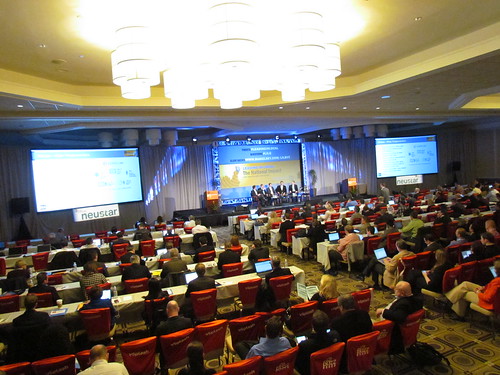
BIA/Kelsey’s Leading in Local 2013 conference March 18-20 in Boston broke so much new ground it’s hard to build a report card on what happened among the 50+ speakers and hundreds of participants. But the “local industry” has clearly moved from the idea of a single breakout player (i.e. Groupon) to a broader picture, where digital marketing has become the norm for both national and local players as they target local consumers.
Just as importantly, they will use an ever-increasing number of channels and features to do so, from native advertising to mobile location services to the pool of promotional services.
Befitting our theme of “The National Impact,” we saw for the first time that big spending national players are showing real interest in using the Web and mobile to target local consumers. Research presented by Balihoo on behalf of The CMO Council showed that 59 percent of CMOs now believe that localized marketing is essential to business growth and profitability.
How important is localized marketing? Yodle CEO Court Cunningham said that 1/3 of Yodle’s revenue now comes from national. But it isn’t always smooth sailing. “There is both a tension and a dialogue” between national companies and their local operations or franchises,” Cunningham noted — a tension that is exacerbated by the ability of everyone to use the available tools, disintermediating centralized resources. “How important the brand umbrella is in the scheme of things is a great question,” said Cunningham.
Localization, itself, has different characteristics from market to market. As Hill Holliday EVP Cindy Stockwell noted in her keynote, national TV provides ground cover for brands. But “location is even more important. Use location (geo-fencing, for example) to add value to the experience,” she said.
Smart phones especially are driving the new environment. Dunkin’ Donuts , for instance, already has 1.8 million downloads — and every single download represents membership in a loyalty program.
“With an App, Dunkin’ will know if someone comes in every day, and whether they usually get coffee or Danish,” said Stockwell. “The more you can say ‘thank you for your business,'” the more successful you will be in getting them to spend more.”
Offers are central to this strategy. Social media and offers need to vary from market to market, she said. “In this market (Boston), you will never get an offer for coffee. We are totally covered” because everyone is alraedy drinking Dunkin’ coffee. “But in Dallas, which is a donut market, you will get an offer for coffee.” Chicago, she said “is in the middle.”
For Stockwell, there are three universal precepts: Add value to consumers in whatever channel they use; drive choice; and provoke conversation (thus sparking virality). “Brands must have continuous conversations with customers everyday,” she emphasized.


This Post Has 0 Comments